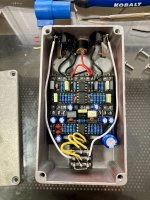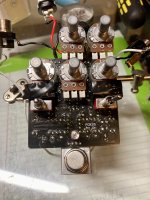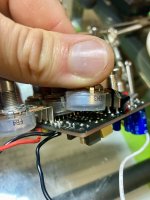ragamuffin
Well-known member
I recently built a Crunch Captain Deluxe and it sounds good and seems to be working but overall volume is low.
With the Mode switch in the middle (classic Crunch Box/high gain) and clipping switch to the right (LED clipping, the lighter clipping option) with Gain at noon I have to nearly max the volume to get unity level. In the heavier clipping setting (to the left) I can hardly reach unity.
Does this sound normal, or is something off?

With the Mode switch in the middle (classic Crunch Box/high gain) and clipping switch to the right (LED clipping, the lighter clipping option) with Gain at noon I have to nearly max the volume to get unity level. In the heavier clipping setting (to the left) I can hardly reach unity.
Does this sound normal, or is something off?

Last edited:


